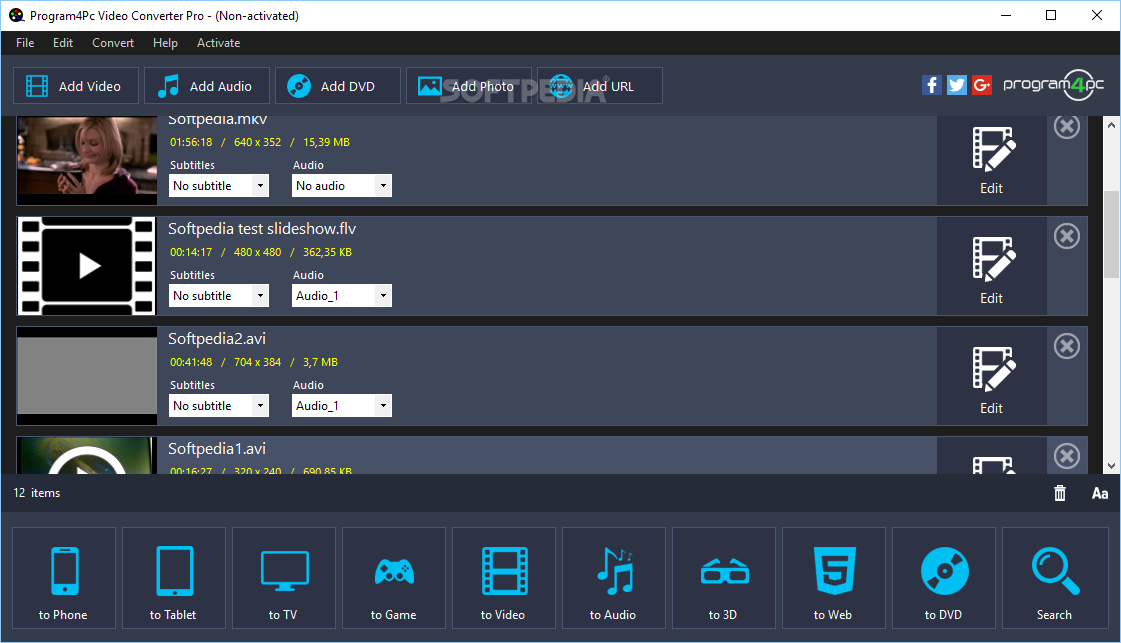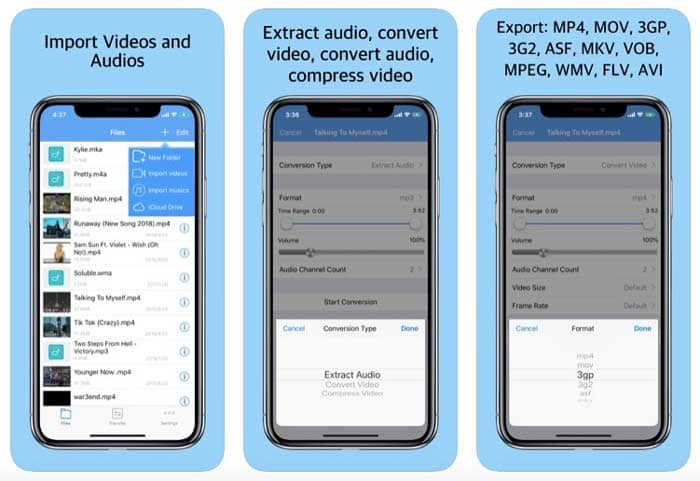
- #HOW TO CONVERT VIDEO FILES TO AVI IN HANDBRAKE MAC OS#
- #HOW TO CONVERT VIDEO FILES TO AVI IN HANDBRAKE INSTALL#
- #HOW TO CONVERT VIDEO FILES TO AVI IN HANDBRAKE PORTABLE#
- #HOW TO CONVERT VIDEO FILES TO AVI IN HANDBRAKE SOFTWARE#
Step 7 – Launch the Nero application and choose the “Create VCD” menu option.
#HOW TO CONVERT VIDEO FILES TO AVI IN HANDBRAKE INSTALL#
Step 6 – Then, download and install a program capable of creating a VCD such as Nero.

Step 5 – Choose the “Start Encoding” menu option located on the “File Menu” and observe the blue progress menu bar located at the bottom of the Hand Brake program interface. The MPEG-2 file will be used to create a video CD. Step 4 – Select the “Output Settings” menu tab located on the Hand Brake menu interface and choose the “MPEG-2” format option. Step 3 – Use the program’s file chooser to select the “AVI” file to convert to CD. Step 2 – Launch the Hand Brake program and then choose the “File” and “Open Source” menu options.
#HOW TO CONVERT VIDEO FILES TO AVI IN HANDBRAKE MAC OS#
The Hand Brake application is open source, released under the GPL license and supports the Linux, Mac OS X, and Windows Operating Systems (OS’s). Step 1 – Download and install the Hand Brake application on your computer. Steps to Convert AVI to CD Using Handbrake and Nero
#HOW TO CONVERT VIDEO FILES TO AVI IN HANDBRAKE PORTABLE#
Although AVI files can easily be burned to CD without converting the content, conversion is required in order to support playback on portable media players. As a result, end-users commonly have the need arise to convert AVI to CD.
#HOW TO CONVERT VIDEO FILES TO AVI IN HANDBRAKE SOFTWARE#
The file format can contain both video and audio content however, it is not supported on all multimedia software programs or hardware devices. It goes without saying, we recommend you use it, rather than playing download roulette and possibly installing a terrible piece of software on your system.The AVI video CODEC was created by the Microsoft Corporation and lets end-users create high quality video files on a container format. Handbrake is easy to use, risk free, and we are able to achieve very desirable results, simply using the default settings. When our file is done, we should be able to play it in Chrome. And, success, we can now easily play this file on virtually any video player, phone, tablet, and, of course, cast it to our big screen TV in the living room! Here you see our file is almost six-percent complete, and has almost nineteen minutes remaining (estimated). You can note Handbrake’s progress at the bottom of the application window. MKV may play perfectly in an all-in-one solution like VLC, but it often meets resistance from other players like Windows Media Player and Chrome.īack on Handbrake’s main window, we give our transcoding job one more look and click “Start.”ĭepending now upon your computer’s speed and the size of the file, this operation could take a few minutes or a few hours. This type of file is very popular with purveyors of anime and foreign films because it allows them to be distributed with extra features such as subtitles and multiple languages.

In this example, the format of our source file is.

The problem is, the file won’t play because it’s in a format Chrome doesn’t support. Here’s the situation, we really want to play a file in a Google Chrome tab so we can then cast it to our TV. Today, we’re just going to show you the simplest way to convert one video file format to another. We’re not going to even bother with any of these though. You can adjust your video and audio quality, add subtitles, and much more. Source displays basic information about your source file: titles in the file, angles, and dropdown buttons that will allow you to convert your file by chapter, time (seconds), or frames.įinally, there are your Output settings. Destination, of course, allows you to choose where your converted file is saved and what it is called. Along the top row are six buttons where you can manipulate essential functions, such as opening your source file, adding a job to the queue, and a simple “Start” button, which says it all.īelow these buttons are your Source and Destination features.


 0 kommentar(er)
0 kommentar(er)
